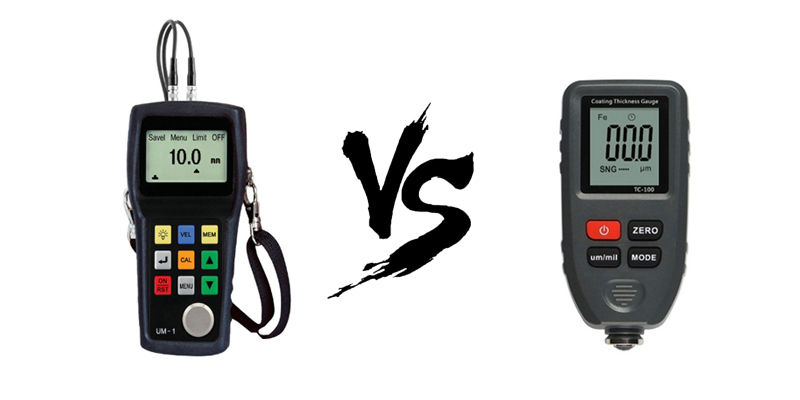Coating thickness gauges and ultrasonic thickness gauges are both instruments used to measure the thickness of objects, but coating thickness gauges and ultrasonic thickness gauges have many differences in the measurement process, such as measurement objects, measurement thickness and other factors. Below, SISCO will briefly introduce the differences between coating thickness gauges and ultrasonic thickness gauges.
Ultrasonic thickness gauges can accurately measure various plates and various processed parts, and can also monitor various pipelines and pressure vessels in production equipment, and monitor their thinning degree after being corroded during use. It is widely used in the petroleum, chemical industry, metallurgy, shipbuilding, aviation, aerospace and other fields. The value of ultrasonic thickness gauges lies in the non-destructive testing of thickness.
Difference
Coating thickness gauges are mainly used to measure the thickness of coatings on metals, anti-corrosion layers, electroplating layers, plastics, paints, plastics, ceramics, enamel, etc., and can also be extended to the thickness of paper, film, plates, etc. Take indirect measurements. The accuracy of the coating thickness gauge is relatively high, generally in the unit of um, and the display resolution can reach 0.01, 0.1, 1um and others. The measuring range of the coating thickness gauge is generally 0~1250um. The special ones are 0~400um and 0~50mm.
In summary, coating thickness gauges and ultrasonic thickness gauges are indeed two different instruments for measuring thickness, but for coating thickness gauges and ultrasonic thickness gauges that both use ultrasonic measurements, they are existing differences and similarities. We don't need to distinguish them specifically in our daily life. If you want to distinguish, it is mainly based on the range of measurement. For example, to measure objects with a thickness within 2mm, we usually need a coating thickness gauge for measurement.

Similarity
Coating thickness gauges are mainly used in the surface treatment industry to measure the coating thickness on metal or plastic surfaces. The specific measurement method is as follows: Put the ordinary coating thickness gauge diaphragm (calibration sheet) together with the product that has not undergone surface treatment, and then spray, and measure the thickness of the diaphragm with an instrument after the end, so as to know the thickness of the product coating.
Both coating thickness gauges and ultrasonic thickness gauges are non-destructive testing instruments, which means they can measure the thickness of a material without destroying it. Both the coating thickness gauge and the ultrasonic thickness gauge can measure the thickness of the material in contact with the probe from one side of the material, thus avoiding the need for calipers, micrometers, gauges, etc. The advantages of detection are widely used in plate manufacturing, pipeline anticorrosion, electroplating coating, mechanical parts manufacturing, aerospace and other important fields. These two thickness gauges are used in the measurement of material thickness in different fields. In fact, the coating thickness gauge focuses on the measurement of the surface coating, while the ultrasonic thickness gauge focuses on the measurement of the base material of the wall thickness and plate thickness.

